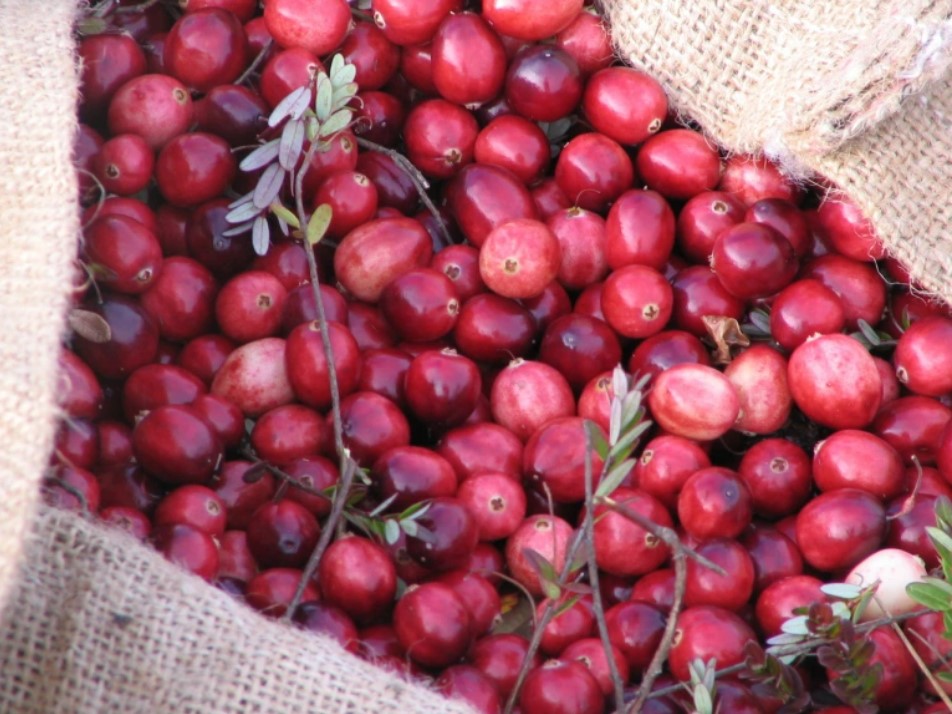
(Photo Cape Cod Cranberry Growers’ Association)
THE BOSTON HERALD – For most people, cranberries are something that show up on the Thanksgiving table, in homemade sauce or canned jelly that slides onto a plate.
But for New Englanders, they’re part of the region’s bounty — and cranberry season is something to celebrate.
Before our foliage season gets in high gear and the temperature is just right for sweaters, the harvest season kicks in.
This year’s crop won’t disappoint. The Cape Cod Cranberry Growers Association reports that thanks to a hearty pollination season, they expect the crop to come in at about 1.8 million barrels; 19% higher than last season.
All they hoped for, they said in early August, was a few soaking rain storms. Cue the late August and early September weather and you’ve got a banner season.
Consider these ways to have a berry good time this early autumn.
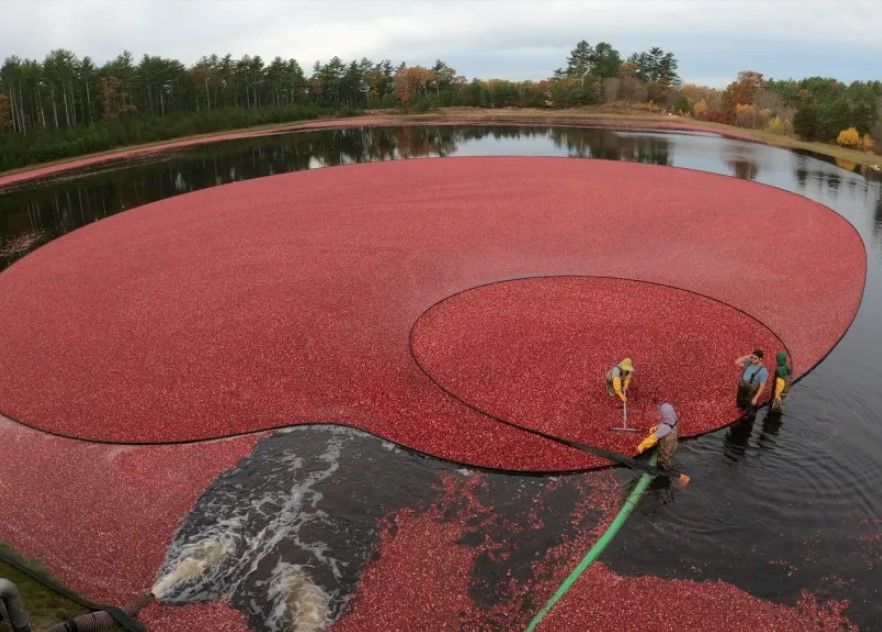
(Photo Cape Cod Cranberry Growers’ Association)
Make a visit
Cranberry bogs were first cultivated in Massachusetts back in 1816. Since then, the state has been a leader in producing the berries and today, hundreds of bogs dot towns, mostly on the South Shore and through Cape Cod.
A road trip to view them — and stop for photos — is a day well spent. Consider mapping a route through Plymouth, Carver, Plympton and Wareham. You can stop in at Mayflower Cranberries on Brook Street in Plympton (mayflowercranberries.com), and then meander along to Makepeace Farm in Wareham (makepeacefarms.com) where you can take a bog tour and then enjoy cranberry treats in their cafe.
Cape Cod is a bog haven. You can follow Route 6A and see some, hop on your bike on the Cape Cod Rail trail to spot a few, and find dining spots with gorgeous views.
An important note for those new to berry gazing: The berries are not always floating in that blue water. That view is limited to harvest days, and seeing it means a little bit of luck.
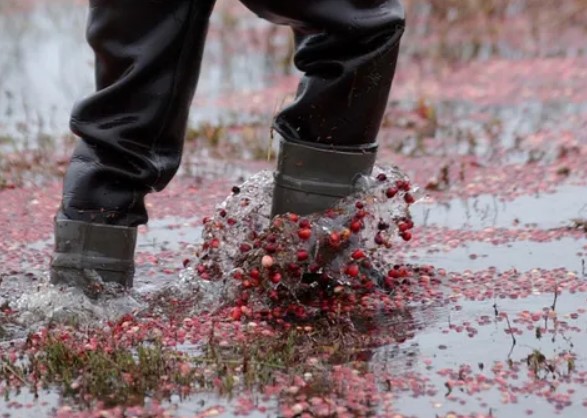
(Photo Cape Cod Cranberry Growers’ Association)
Another cool way to see them is while playing golf. Souther’s Marsh Golf Club in Plymouth (southersmarsh.com) features holes that weave around bogs. Each year come harvest time they form a giant heart with their berries on the water — a special sight that never gets old.
Another great way to see bogs is to join one of the tours from the Cape Cod Cranberry Grower’s Association (cranberries.org). From the first weekend of October through early November, they will take you to working bogs. And while you won’t get in the water with the berries, you will, they promise, see an active harvest on each tour. The tour is adapted weekly to visit bogs that are actively harvesting.
Know your berries
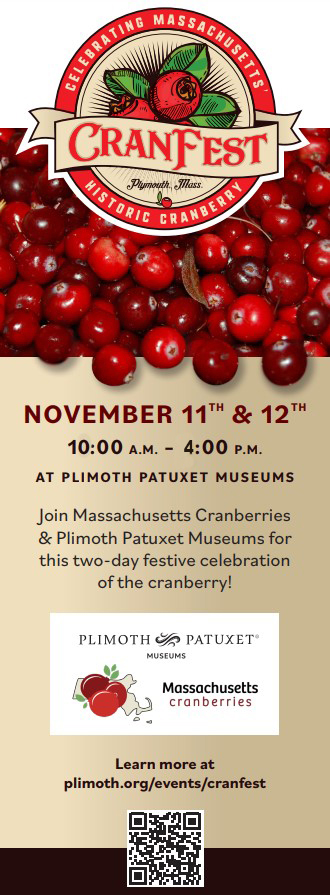
It isn’t like the Pilgrims discovered cranberries on their own: As with most things, the Wampanoags helped them learn how to use the berries in many ways. A great educational trip (or addition to a Cape berry gazing day) is a visit to the Harwich Historical Society and Brooks Academy Museum (harwichhistoricalsociety.org/cranberry-culture/), which will give you insight into the history of the berry, how they grow and their many uses.
For an up-close educational experience out in the fresh air, consider Cranberry Bog Tours (cranberrybogtours.com), an immersive (and year-round) educational experience on the largest organic cranberry farm on the Cape, located in Harwich.
The tour lets you know all about the world of cranberry harvesting. You’ll see how the equipment works, how crops evolve and learn all about the day-to-day operation of a successful cranberry farm. There’s a gift shop too. Because this is a true working farm, they do not offer tours on harvest day itself, which means you won’t see an active harvest — but the fun and learning make it well worth the visit.
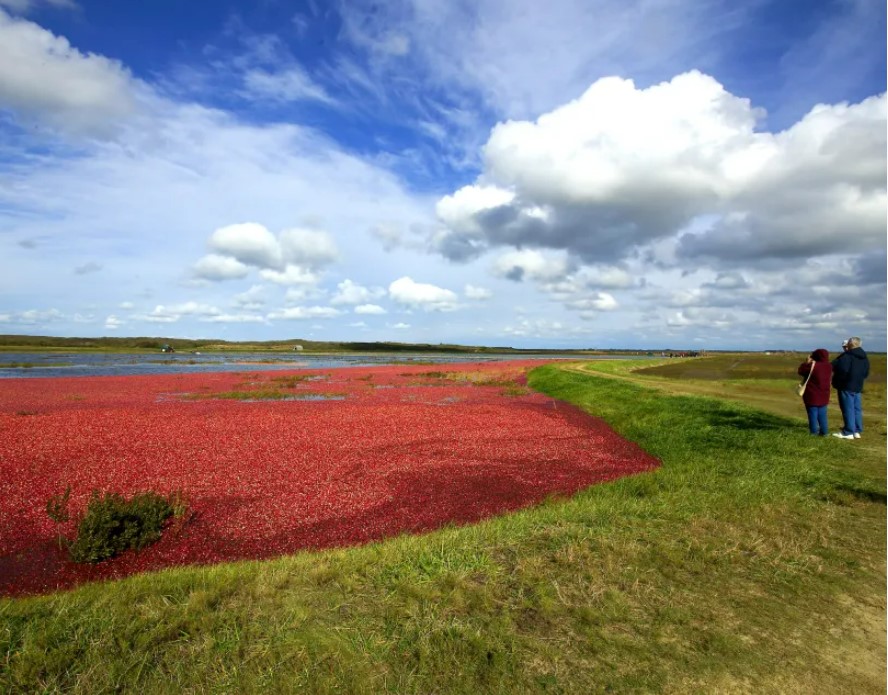
(Photo courtesy Massachusetts Office of Travel and Tourism)
Celebrate them
What do New Englanders love as much as their berries? A party to celebrate the cranberry. Festivals begin early and run through harvest season.
You’ll find festivals in Harwich (harwichcranberryfestival.org), Nantucket (nantucketchamber.org/events/details/cobblestones-cranberries-2022-31293) and, new this year, Plimoth Pawtuxet Museums (plimoth.org), which will celebrate with Cranfest Nov. 11-12 (plimoth.org/events/cranfest). There will be food trucks, live music, a traveling bog and more both days.
By Moira McCarthy







